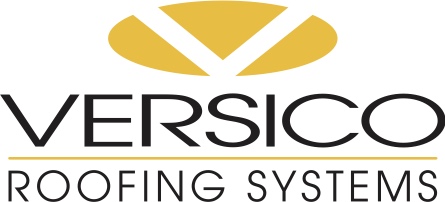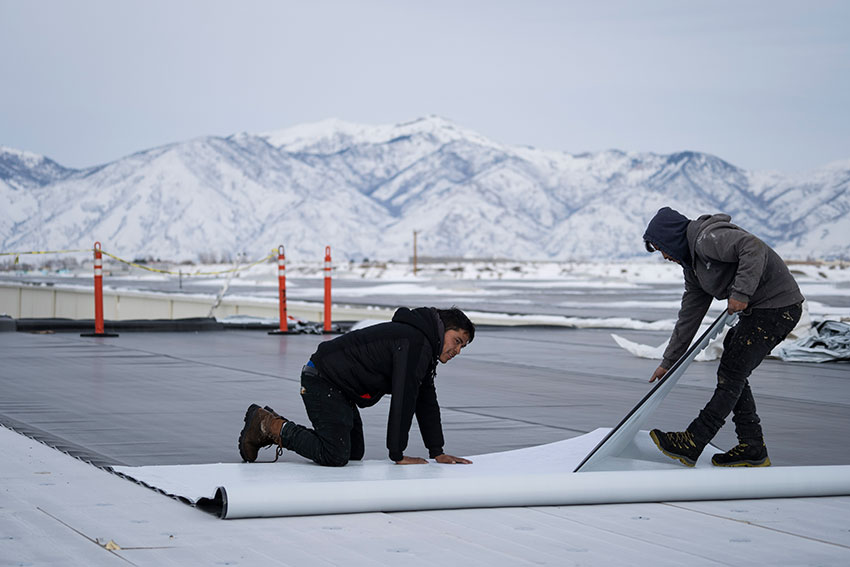Focus on Health in Roof Specification
 1 AIA LU/HSW; 1 GBCI CE Hour; 0.1 ICC CEU; 1 IIBEC CEH; 0.1 IACET CEU*; 1 AIBD P-CE; AAA 1 Structured Learning Hour; This course can be self-reported to the AANB, as per their CE Guidelines; AAPEI 1 Structured Learning Hour; This course can be self-reported to the AIBC, as per their CE Guidelines.; MAA 1 Structured Learning Hour; This course can be self-reported to the NLAA.; This course can be self-reported to the NSAA; NWTAA 1 Structured Learning Hour; OAA 1 Learning Hour; SAA 1 Hour of Core Learning
1 AIA LU/HSW; 1 GBCI CE Hour; 0.1 ICC CEU; 1 IIBEC CEH; 0.1 IACET CEU*; 1 AIBD P-CE; AAA 1 Structured Learning Hour; This course can be self-reported to the AANB, as per their CE Guidelines; AAPEI 1 Structured Learning Hour; This course can be self-reported to the AIBC, as per their CE Guidelines.; MAA 1 Structured Learning Hour; This course can be self-reported to the NLAA.; This course can be self-reported to the NSAA; NWTAA 1 Structured Learning Hour; OAA 1 Learning Hour; SAA 1 Hour of Core Learning
Learning Objectives:
- Explain how indoor and outdoor VOCs can negatively impact occupants, installers, and the environment.
- List state and federal regulations that impact the allowed VOC content in roofing applications.
- Discuss innovative options in single-ply roofing materials and installation techniques that offer low and no-VOCs.
- Identify building owner benefits to installing a low- or no-VOC roofing system, including a healthier renovation project and potential green building credits.
This course is part of the Commercial Roofing Academy
MATERIALS AND RESOURCES
Option 1: Environmental Product Declaration (EPD)
Intent: To encourage the use of products and materials for which life-cycle information is available and that have environmentally, economically, and socially preferable life-cycle impacts.
Requirement: Use at least 20 different products that have EPDs, which have been third-party verified and are in accordance with ISO 14025, ISO 14040, ISO 14044, or ISO 15927-1.
However, if the project falls within the LEED BD+C: Schools Category, then low-VOC adhesives and sealants can help earn a possible 3 points.
Low-Emitting Materials–Indoor Environmental Quality
Possible 3 Points
Intent: To reduce concentrations of chemical contaminants that can damage air quality, human health, productivity, and the environment.
Requirements: This credit includes requirements for product manufacturing as well as project teams. It covers volatile organic compound (VOC) emissions in the indoor air and the VOC content of materials, as well as the testing methods by which indoor VOC emissions are determined. Different materials must meet different requirements to be considered compliant for this credit. The building interior and exterior are organized in seven categories, each with different thresholds of compliance. The building interior is defined as everything within the waterproofing membrane. The building exterior is defined as everything outside and inclusive of the primary and secondary weatherproofing system, such as waterproofing membranes and air- and water-resistive barrier materials.
In the threshold of compliance for emissions and content standards, additional VOC content requirements for wet-applied products state that in addition to meeting the general requirements for VOC emissions, on-site wet-applied products must not contain excessive levels of VOCs. This is to protect the health of installers and other trade workers who would be exposed to these products. In order to demonstrate compliance, a product or layer must meet the following requirements, as applicable. Disclosure of VOC content must be made by the manufacturer.
Any testing must follow the test method specified in the applicable regulation.
- All paints and coatings wet-applied on site must meet the applicable VOC limits of the California Air Resources Board (CARB) 2007, Suggested Control Measure (SCM) for Architectural Coatings, or the South Coast Air Quality Management District (SCAQMD) Rule 1113, effective June 3, 2011.
- All adhesives and sealants wet-applied on site must meet the applicable chemical content requirements of SCAQMD Rule 1168, July 1, 2005, Adhesive and Sealant Applications, as analyzed by the methods specified in Rule 1168. The provisions of SCAQMD Rule 1168 do not apply to adhesives and sealants subject to state or federal consumer product VOC regulations.
- For projects outside the U.S., all paints, coatings, adhesives, and sealants wet-applied on site must either meet the technical requirements of the above regulations, or comply with applicable national VOC control regulations, such as the European Decopaint Directive (2004/42/EC), the Canadian VOC Concentration Limits for Architectural Coatings, or the Hong Kong Air Pollution Control (VOC) Regulation.
CONCLUSION
VOCs both inside and outside of the building envelope can create health issues for occupants and thus are both heavily scrutinized by building owners and regulated. Understanding the nature of VOCs in how they are measured, quantified, and categorized is critically important to help create a healthy indoor environment. Equally fundamental is to understand the distinction between indoor and outdoor VOCs, how they are defined, and what impact outdoor VOCs have on the environment. Unlike indoor VOCs, outdoor VOCs react with natural elements to create tropospheric ozone, or, smog.
This relationship between VOCs and ground-level ozone is increasingly becoming a concern as the EPA, states, and regulatory boards, such as CARB, work to create more stringent rules around the level of ozone in our communities.
For architects seeking to address VOCs when specifying roofing systems, materials, and adhesives, there are several important factors to consider. These include partnering with manufacturers who readily provide documentation in the form of data sheets and product documentation and certifications to verify VOC content and emissions levels.
In addition, it is important to rely on these partners to help identify low-VOC adhesive and sealant options that will comply with federal, state, and local building codes. This is especially relevant when specifying projects that fall within the purview of the California Air Resources Board (CARB), the Ozone Transport Commission (OTC), Lake Michigan Air Directors Consortium (LADCO), or the South Coast Air Quality Management District (SCAQMD).
Finally, as more clients seek sustainable building projects, it is important to understand how low-VOC roofing options can play a part in contributing to LEED credits, especially when designing for schools and health facilities.
Understanding how to discern between low-VOC products and collecting enough information to help choose which roofing system, style, and type is most appropriate for a project can be confusing given the varying restrictions on VOC-laden materials these days. However, a thoughtful and accountable specification process guided by a solid knowledge of VOCs and their prevalence in the building industry will go a long way to helping a project pass muster.
END NOTES
1 https://www.epa.gov/iaq-schools/why-indoor-air-quality-important-schools
2 https://pubchem.ncbi.nlm.nih.gov/compound/712#section=Vapor-Pressure
3 https://www.epa.gov/indoor-air-quality-iaq/technical-overview-volatile-organic-compounds
4 https://www.ncbi.nlm.nih.gov/pmc/articles/PMC8700805/
5 https://www.federalregister.gov/documents/2023/02/08/2023-02384/air-quality-revision-to-the-regulatory-definition-of-volatile-organic-compounds-exclusion-of
Andrew A. Hunt is Vice President of Confluence Communications and specializes in writing, design, and production of articles and presentations related to sustainable design in the built environment. In addition to instructional design, writing, and project management, Andrew is an accomplished musician and voice over actor, providing score and narration for in both the entertainment and education arena. www.confluencec.com






